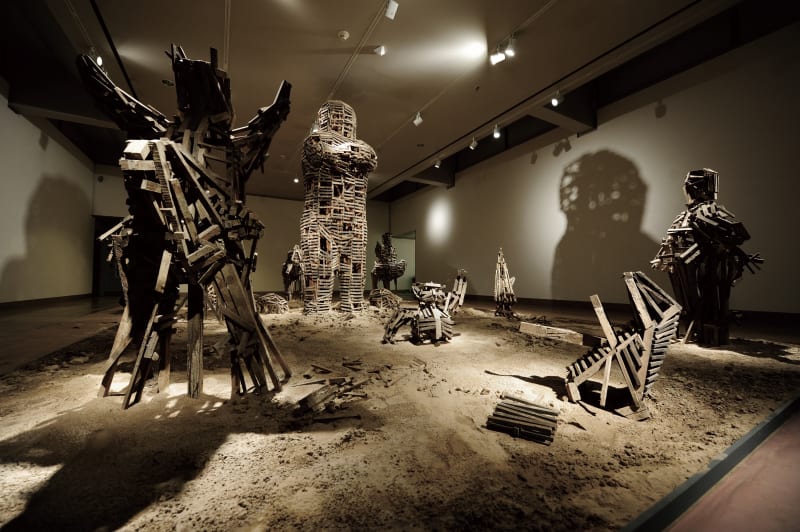Curator|Jo-Anne Birnie Danzker
Venue|Frye Art Museum, Seattle
Located in the city center of Seattle, Frye Art Museum is an important museum of contemporary art in the United States, which is a construction of a total 42,000 square feet. It first opened its doors in 1952 as the legacy of Charles and Emma Frye, prominent early-twentieth century Seattle business leaders and art collectors. Dr. Jo-Anne Birnie Danzker, the director of the Frye Art Museum, has long paid attention to Li Chen’s artwork and acknowledges its academic value. The Frye Art Museum’s 60th anniversary falls on this year. Dr. Danzker therefore invited Li Chen to hold this installation sculpture exhibition under her curation. This exhibition launches the Immortality series and is also Li Chen’s museum debut in the United States.
Li Chen and the Asia Art Center team flew to Seattle and worked together with the Frye team, spending 16 days on the installation. Various events during February 16th to 18th, over 2000 guests, including influential collectors all over the United States, intellectuals, art connoisseurs, overflowed the Frye for a tour guided by Li Chen and the Director Dr. Danzker.
In his large-scale installation Eternity and in the sculptural “body” of Commoner, both specially conceived for the lofty spaces of the Frye Art Museum, Li poses the question: is life determined by the material, and the bodily, or by spiritual vitality? Can life continue as a legend, a belief, in a form outside of the physical body? The installation Eternity consists of a towering, twelve-foot-tall wooden figure in a room-sized bed of clay dust. This figure is surrounded by small “gods,” or escorts, in a parade formation typical at traditional temple fairs in Taiwan. For Li, the parade is reminiscent of public displays by the “modern gods” of today who brandish their resources they possess such as wealth and privilege in the company of subordinate “small gods” as the pomp. The artist has Eternity hold silicon carbide as an object of great value, and a light radiating from his breast. But ultimately bodies made of flesh and blood must crumble, and in the end the treasure is a form of matter that passes through different “Eternity’s” hands, along with the rise and fall of human affairs and the alternation of power. Stripped of their glory, reduced to skeletons of wood in Eternity, lying in a glass case like Commoner, our modern gods are reminded by Li of the transience of human life and earthly power. Li Chen uses lighting to project the Eternity with engraved hollows onto the wall, pointing out the illusory nature of life. Because social resources are disproportionately controlled by a small group of people, the Commoner, holding a husk of wheat, is struggling to survive, showing his character as tenacious as grass and as vital as the common necessities of life.
The Immortality series is the thinking born from Eastern philosophy that contemplates ideas such as the spirituality of life, the alteration of birth and expiration. In the dialogue of the Eternity and the Commoner, Li Chen puts forward a metaphor of power struggle in the political and the commercial arena, the imbalance of resource allocation, and the continuous nature of the spirit, and he especially criticizes contemporary issues regarding class in the age of capitalism. It goes beyond time, space, culture and language, and therefore echoes beyond borders, garnering this great success.


